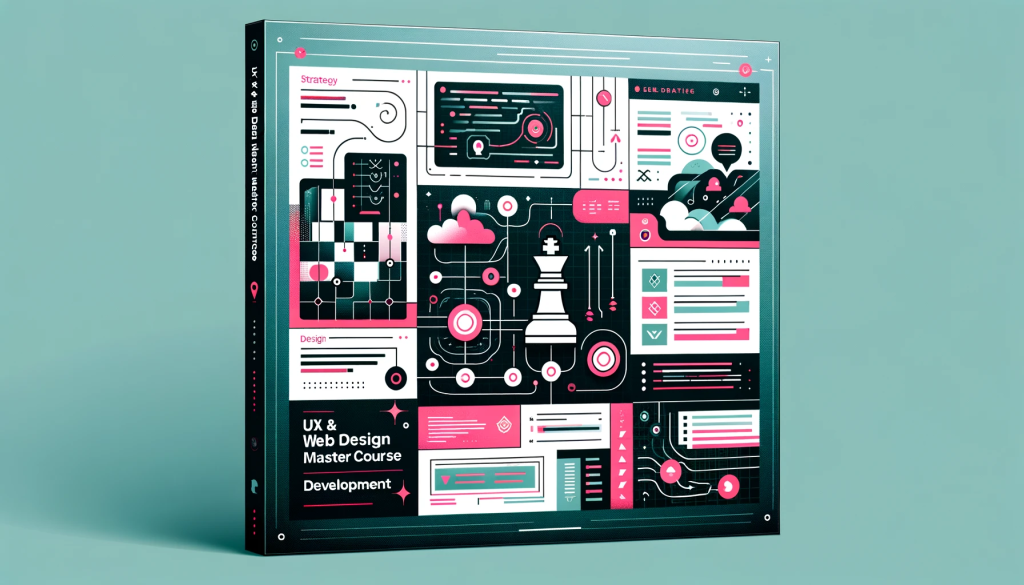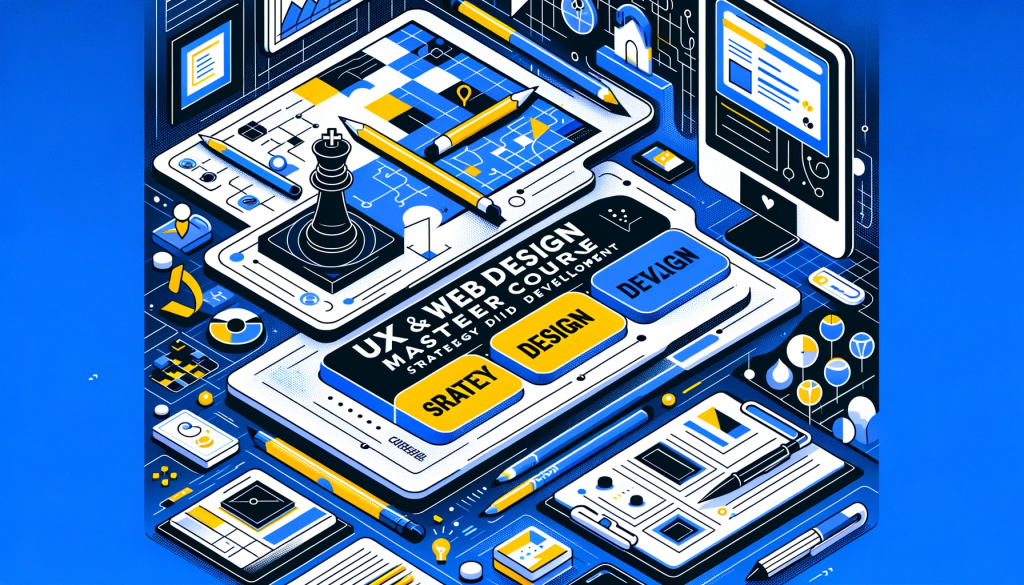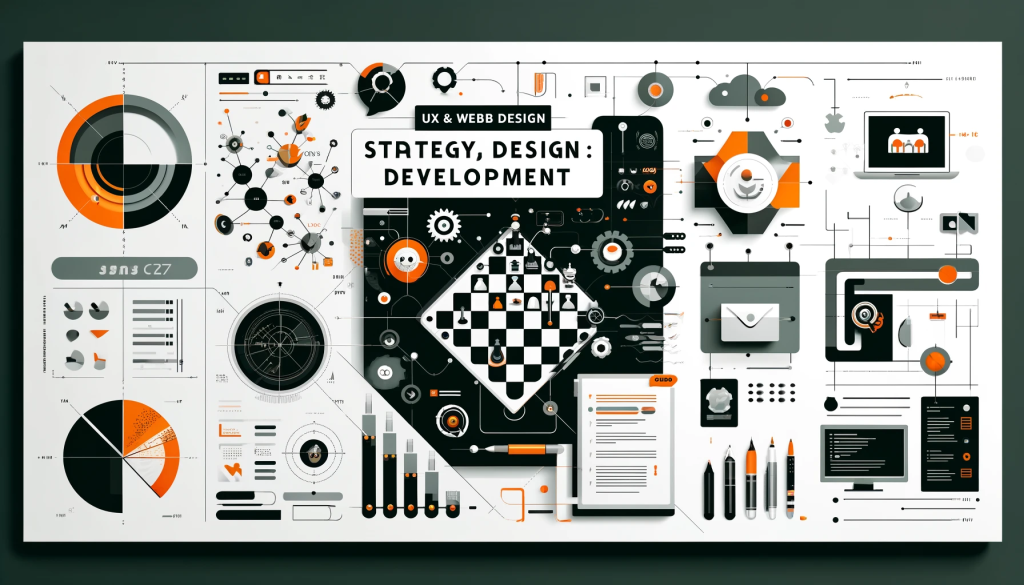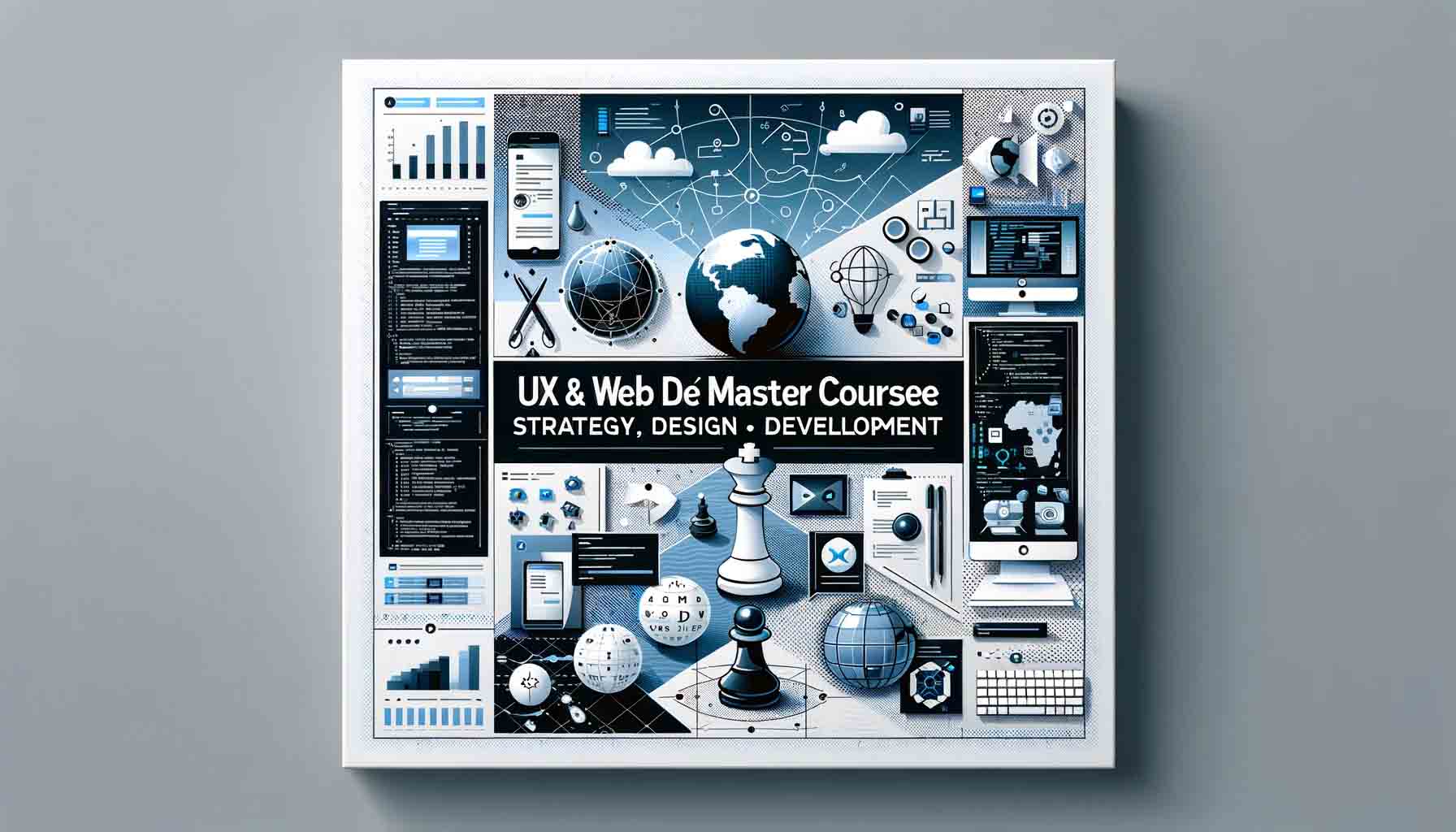In today’s digital age, User Experience (UX) and web design play pivotal roles in shaping how users interact with digital products. A seamless, intuitive, and aesthetically pleasing interface can make the difference between a successful product and a failed one. As such, mastering the intricacies of UX and web design has become a valuable skill set in the tech industry. This article explores the comprehensive approach of a UX & Web Design Master Course, focusing on strategy, design, and development. We’ll delve into the structure of the course, the essential skills taught, and the practical applications of these skills.
Course Structure and Curriculum
The UX & Web Design Master Course is meticulously structured to cover all aspects of the field. It is designed to guide students from foundational concepts to advanced techniques, ensuring a well-rounded education.
Overview of Course Modules
The course is divided into three main modules: Strategy, Design, and Development. Each module builds upon the previous one, creating a cohesive learning experience.
- Strategy: This module focuses on understanding the users and setting a solid foundation for the project.
- Design: Here, students learn the principles of design, including visual aesthetics, user interface (UI) design, and prototyping.
- Development: This final module covers the technical aspects, including front-end and back-end development, and integrating design into functional websites or applications.
Detailed Breakdown of Each Module

Strategy
In the strategy module, students learn to understand user needs through research and analysis. This phase is crucial as it sets the direction for the design and development phases. Key topics include:
- Understanding User Needs: Learning how to gather and interpret user data to inform design decisions.
- Research and Analysis Techniques: Using tools and methods like surveys, interviews, and usability testing to gather insights.
- Creating Personas and User Journeys: Developing detailed profiles of target users and mapping out their interactions with the product.
- Setting Clear Goals and Objectives: Defining what success looks like for the project and establishing measurable goals.
Design
The design module teaches students how to translate the insights gained from the strategy phase into practical design solutions. Key topics include:
- Key Design Principles: Understanding the fundamentals of good design, including balance, contrast, and hierarchy.
- Wireframing and Prototyping: Creating low-fidelity & high-fidelity prototypes to visualize & test design concepts.
- Visual Design and UI Elements: Learning about color theory, typography, and the creation of UI components.
- Tools and Software for Design: Gaining proficiency in industry-standard tools like Sketch, Adobe XD, and Figma.
Development
The development module focuses on bringing the designs to life through coding and technical implementation. Key topics include:
- Front-End vs. Back-End Development: Understanding the roles of front-end (user interface) and back-end (server-side) development.
- Coding Languages and Frameworks: Learning languages like HTML, CSS, JavaScript, and frameworks such as React and Angular.
- Integrating UX Design into Development: Ensuring that the development process maintains the integrity of the design.
- Testing and Iteration: Conducting thorough testing and iterating on the design based on feedback.
Strategy in UX and Web Design

Effective UX and web design start with a solid strategy. This involves understanding the target audience, defining the problem, and setting clear objectives. Here’s a closer look at the strategic elements covered in the master course.
Understanding User Needs
Understanding user needs is the cornerstone of UX design. This involves conducting user research to gather data about users’ behaviors, motivations, and pain points. Techniques include:
- Surveys and Questionnaires: Collecting quantitative data from a large audience.
- Interviews: Gaining in-depth insights through one-on-one conversations.
- Usability Testing: Observing how users interact with a product to identify usability issues.
Research and Analysis Techniques
Research is followed by analysis, where data is interpreted to inform design decisions. Key techniques include:
- Affinity Diagrams: Organizing ideas and data to identify patterns and themes.
- Competitive Analysis: Studying competitors to understand industry standards and opportunities for differentiation.
- Analytics and Heatmaps: Using tools like Google Analytics and Hotjar to track user behavior on a website.
Creating Personas and User Journeys
Personas and user journeys help designers empathize with users and anticipate their needs.
- Personas: Detailed profiles of representative users, including demographics, behaviors, and goals.
- User Journeys: Visual representations of the steps users take to achieve a specific goal, highlighting pain points and opportunities for improvement.
Setting Clear Goals and Objectives
Goals and objectives provide a roadmap for the project. Effective goal-setting involves:
- SMART Goals: Specific, Measurable, Achievable, Relevant, and Time-bound objectives.
- KPIs (Key Performance Indicators): Metrics to track the success of the design, such as user satisfaction, engagement, and conversion rates.
Design Principles and Techniques

Design is where strategy meets creativity. The design module of the master course covers the essential principles and techniques needed to create visually appealing and functional designs.
Key Design Principles
Fundamental design principles ensure that a design is both functional and aesthetically pleasing. These principles include:
- Balance: Creating a sense of stability by evenly distributing visual elements.
- Contrast: Using differences in color, size, and shape to highlight important elements.
- Hierarchy: Organizing content to guide users’ attention in a logical order.
- Unity: Ensuring all design elements work together cohesively.
Wireframing and Prototyping
Wireframing and prototyping are critical steps in the design process. They allow designers to visualize and test their ideas before full-scale development.
- Wireframes: Low-fidelity sketches or digital layouts that outline the basic structure of a webpage or app.
- Prototypes: Interactive, high-fidelity representations of the final product that allow for user testing and feedback.
Visual Design and UI Elements
Visual design focuses on the aesthetics of a product, while UI design ensures that the interface is user-friendly.
- Color Theory: Understanding how colors interact and their psychological impact.
- Typography: Selecting and pairing fonts to enhance readability and convey the right tone.
- UI Components: Designing buttons, forms, and other interactive elements.
Tools and Software for Design

Proficiency in design tools is essential for creating professional-quality work. Key tools include:
- Sketch: A vector graphics editor for digital design.
- Adobe XD: A tool for designing and prototyping user experiences.
- Figma: A collaborative interface design tool.
Development Process
The development module equips students with the technical skills needed to turn designs into functional websites and applications.
Front-End vs. Back-End Development
Understanding the distinction between front-end and back-end development is crucial for effective web design.
- Front-End Development: Involves creating the user interface using HTML, CSS, and JavaScript.
- Back-End Development: Focuses on server-side operations, database management, and application logic.
Coding Languages and Frameworks
Learning various coding languages and frameworks expands a designer’s ability to create dynamic and responsive designs.
- HTML/CSS: The building blocks of web design.
- JavaScript: Adds interactivity and dynamic content to websites.
- React/Angular: Popular frameworks for building complex user interfaces.
Integrating UX Design into Development
Successful integration of UX design into development ensures that the final product remains true to the original design.
- Collaboration: Designers and developers must work closely to ensure a seamless transition from design to development.
- Responsive Design: Ensuring that designs work well on various devices and screen sizes.
Testing and Iteration
Testing is an ongoing process that continues even after the product is launched.
- Usability Testing: Involves real users testing the product to identify issues.
- A/B Testing: Comparing two versions of a design to see which performs better.
- Feedback Loops: Continuously collecting and acting on user feedback.
Lessons Learned from Industry Leaders
Industry leaders share their experiences and insights, highlighting what worked and what didn’t.
- Interview with a UX Designer: Insights into the daily challenges and rewards of working in UX design.
- Expert Tips: Advice from seasoned professionals on staying ahead in the field.
Application of Course Knowledge to Real Projects
Students can apply the knowledge gained from the master course to real-world projects, enhancing their portfolios and gaining practical experience.
- Portfolio Development: Creating a portfolio that showcases a range of projects and skills.
- Capstone Project: A final project that synthesizes everything learned in the course.
Tips for Success in UX and Web Design

Achieving success in UX and web design requires continuous learning, networking, and staying updated with industry trends.
Continuous Learning and Skill Improvement
The field of UX and web design is constantly evolving, so it’s important to keep learning.
- Online Courses and Workshops: Taking additional courses to stay current with new tools and techniques.
- Reading and Research: Keeping up with industry blogs, books, and research papers.
Networking and Professional Development
Building a professional network can open doors to new opportunities and collaborations.
- Professional Associations: Joining organizations like the Interaction Design Association (IxDA) and the User Experience Professionals Association (UXPA).
- Conferences and Meetups: Attending industry events to learn and network with peers.
Staying Updated with Industry Trends
Being aware of the latest trends and technologies ensures that your skills remain relevant.
- Technology Trends: Keeping an eye on emerging technologies like AI and VR in UX design.
- Design Trends: Following trends in web and UI design to keep your work modern and fresh.
Conclusion
The UX & Web Design Master Course provides a comprehensive education in strategy, design, and development. By covering these core areas, the course equips students with the skills needed to succeed in the competitive field of UX and web design. Whether you are a beginner looking to start a career or a professional seeking to enhance your skills, this course offers valuable insights and practical knowledge. As the digital landscape continues to evolve, mastering UX and web design will remain a crucial asset for creating engaging and effective digital experiences.
By understanding the importance of strategy, applying design principles, and mastering development techniques, students can create user-centric designs that not only meet but exceed user expectations. This article serves as a guide to the comprehensive journey of becoming a master in UX and web design, highlighting the essential components and benefits of the course.
